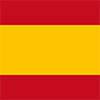The excellent museum that pays tribute to the 101st Airborne Division in Bastogne
The town of Bastogne, in Belgium, is world famous for the siege that took place there in World War II, in December 1944.
The main protagonist of that siege was a unit of United States Army paratroopers: the 101st Airborne Division, also known as the "Screaming Eagles". The troops of this unit were surrounded by the German Army during the Ardennes offensive, which surprised American troops who were spending the winter in the area in relative tranquility.

When the Germans ordered this American division to surrender, General Anthony McAuliffe, then commander of the unit, responded: "NUTS", a response that surprised the Germans. "Nuts" colloquially it is used to refer to the testicles.

Finally, General Patton's Third Army managed to break the siege, managing to free the American paratroopers besieged in Bastogne. Although no veteran of the 101st will ever admit that they needed help, these American paratroopers lived through hell at the hands of the German artillery and also because of the very low temperatures that were recorded in the area during that winter .

For many years I have had great admiration for the 101st. Since I was a child it has been my favorite unit in the US Army and I was happy to know that in Bastogne there is a museum that pays tribute to that Division: the 101st Airborne Museum Bastogne.

The idea for this museum was born in 2009, when brothers Hans and Mieke van Kessel bought a former Belgian Army officers' mess in Bastogne to set up a museum. In turn, collectors Johnny Bona and Franck Ottelet contributed their collections of World War II items.

The building, built in 1936, had been occupied by the German Army in World War II. After the Siege of Bastogne it was used as a hospital by the Red Cross, so it was the ideal place to make the museum. The building was renovated and very realistic display cases and dioramas were built.

The museum has some high quality wax statues, like this one that reproduces a famous photo of General Patton (on the left) with General McAuliffe.

The museum's display cases preserve many relics from that war, including helmets, gas masks, projectiles, etc.

In the museum you can also see what the American soldiers consumed, from combat rations to drinks, during that siege.

The museum's dioramas are not limited to the 101st Division. Here we see a scene featuring two American paratroopers from the much lesser-known 17th Airborne Division, which arrived in Bastogne on January 3, 1945. We see them capturing soldiers of the German Army.

The museum also depicts what the German occupation of Belgium was like. Here we see a scene of a detained civilian, with a member of the Gestapo on the right and two officers of the German Army.
If you want more information about this excellent museum, its opening hours and visiting prices, you can visit its website:
www.101airbornemuseumbastogne.com
---
Photos: 101st Airborne museum Bastogne.
|
Don't miss the news and content that interest you. Receive the free daily newsletter in your email: Click here to subscribe |
- Lo más leído
- A British fairytale ruin: the abandoned shoe house on the Isle of Wight
- The interior of the Statue of Liberty torch and the sabotage that canceled its visits
- The supermassive black hole of Phoenix A, the biggest known light-devouring monster
- A virtual tour of ancient Rome in full color, just as it was in its heyday
- The unknown Soviet female cosmonaut who died on a mission: history or hoax?
- A large collection of Volkswagen cars hidden in an abandoned mine in Switzerland
- An old Soviet military plane abandoned from 1971 on a Russian island near Alaska

 ES
ES





Opina sobre esta entrada: